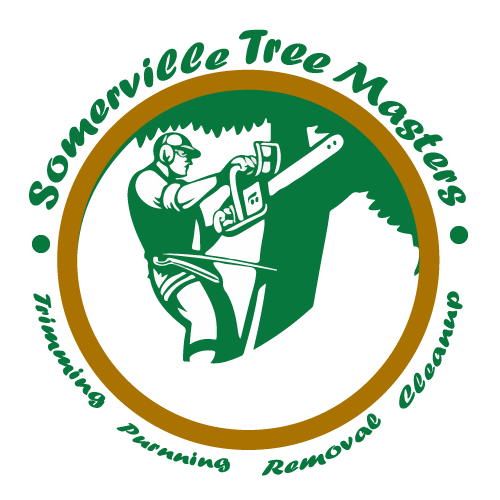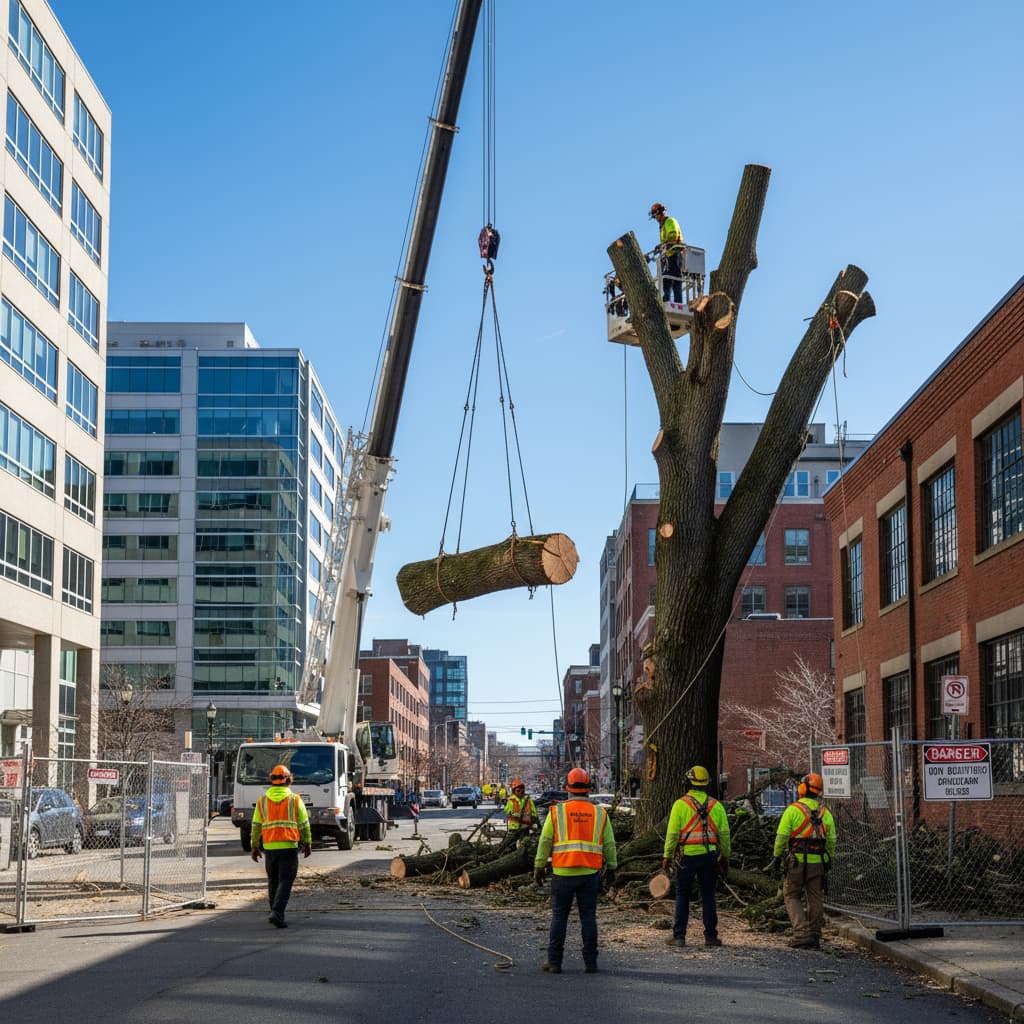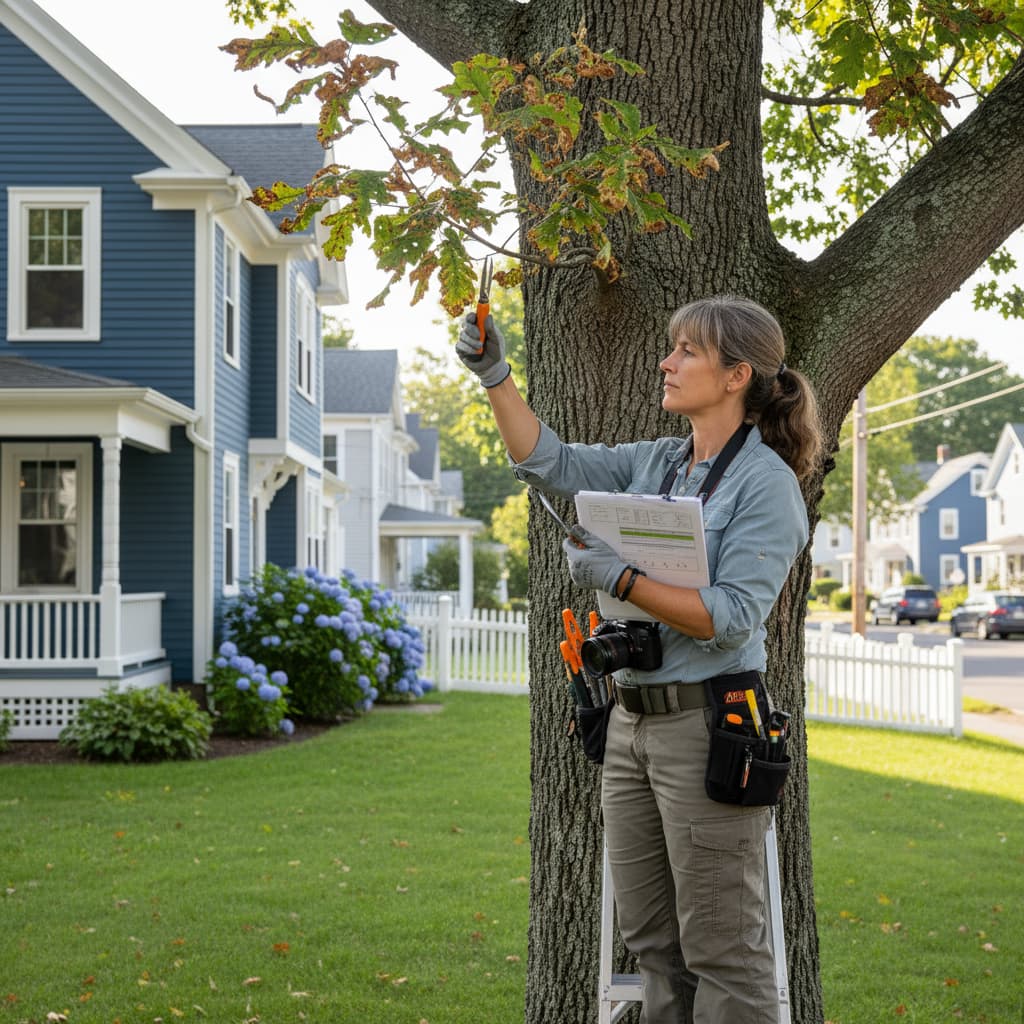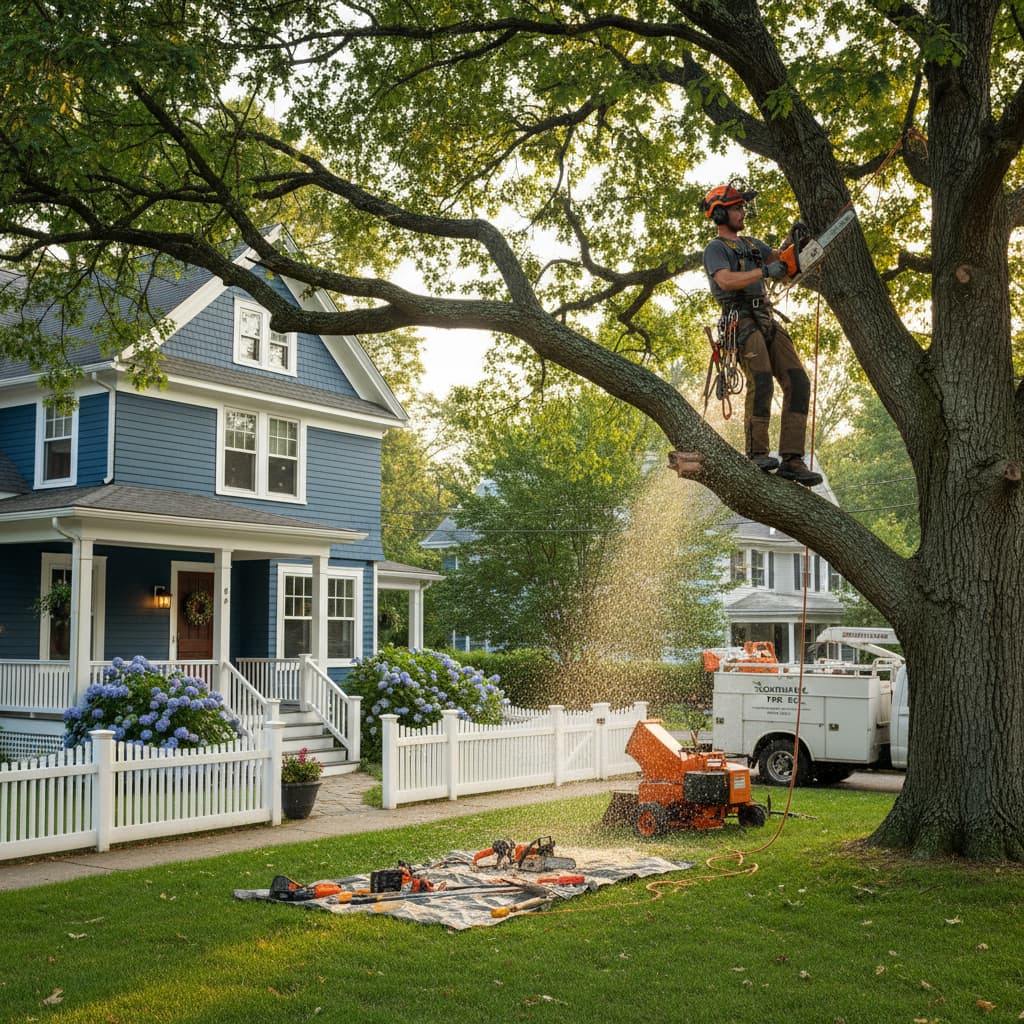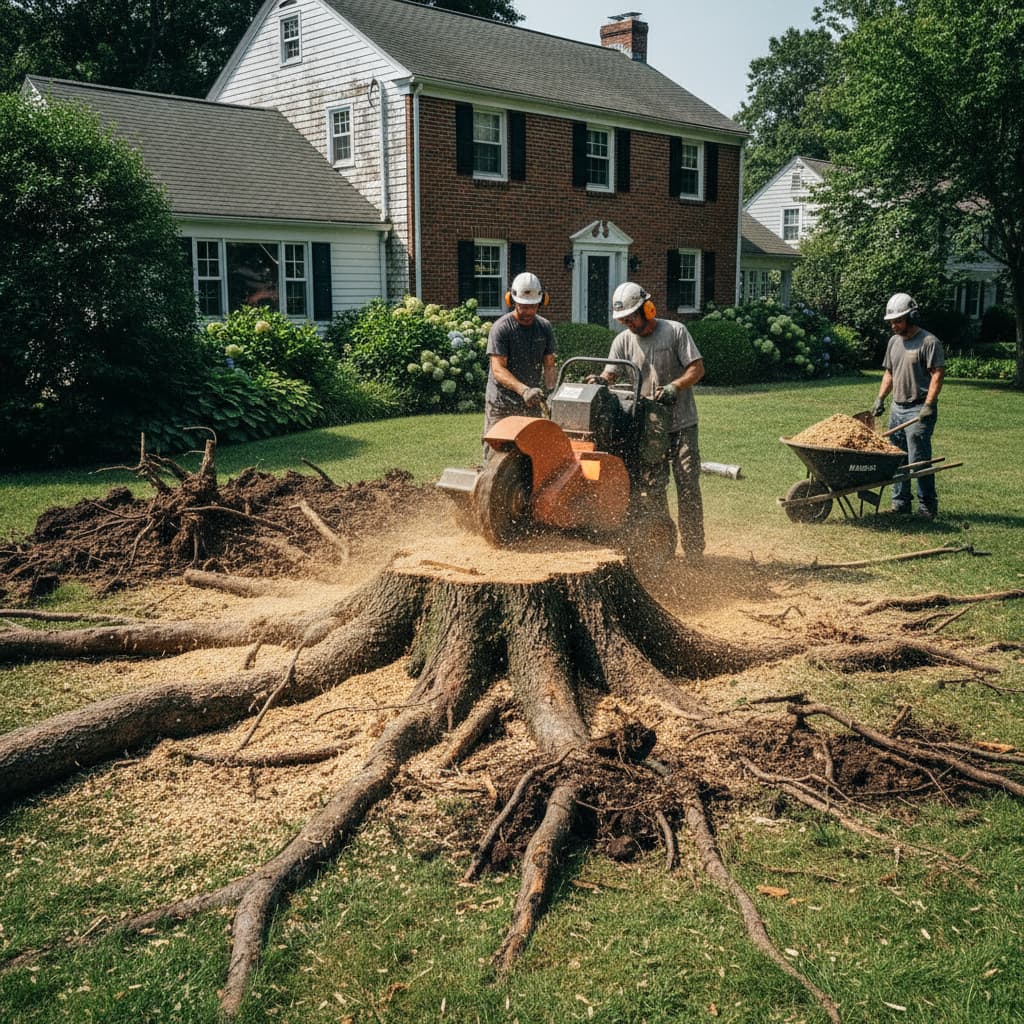Emergency Tree Service: When Disease Makes Trees Hazardous
Emergency Tree Service Somerville
Tree diseases can transform healthy specimens into dangerous hazards requiring immediate emergency tree service intervention. In Somerville, Massachusetts, where mature trees line historic streets from Davis Square to Assembly Row, understanding when diseased trees become emergency situations is crucial for protecting property and public safety. Professional emergency tree service providers specialize in rapid response when tree health issues create imminent dangers.
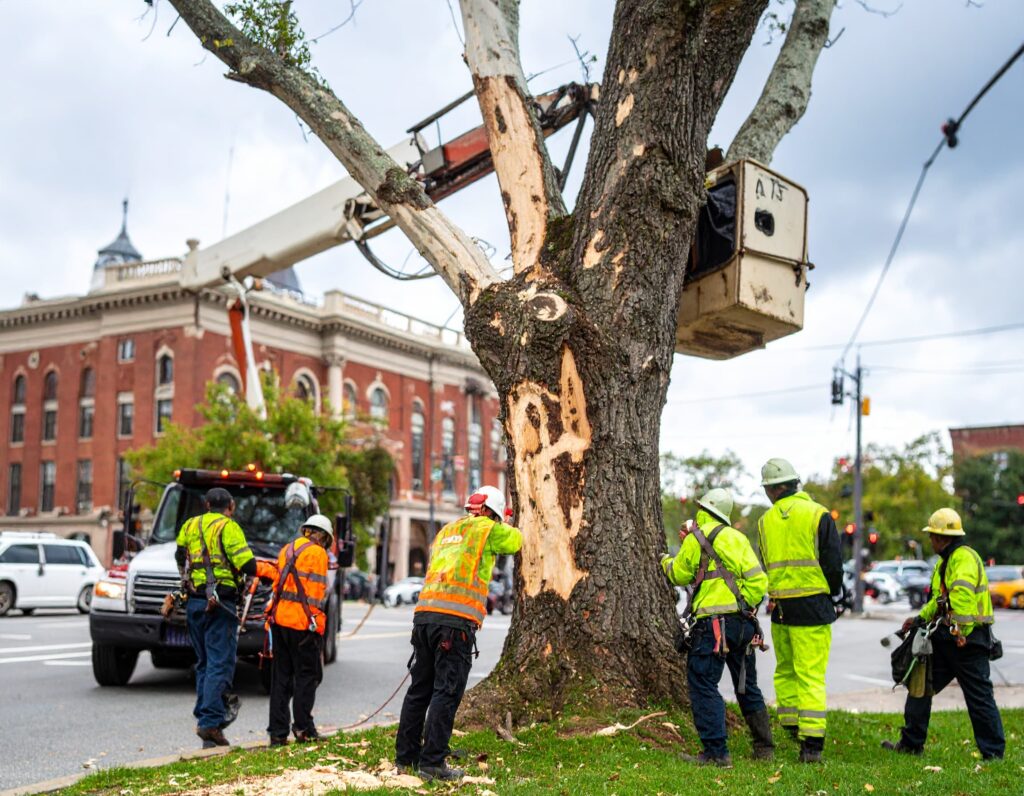
Recognizing Emergency Tree Disease Situations
Not all tree diseases require immediate emergency tree service, but certain conditions create urgent safety hazards that demand swift professional intervention. Understanding the difference between manageable tree health issues and emergencies helps property owners make informed decisions about when to call for immediate assistance.
Emergencies typically involve trees showing rapid decline, structural instability, or symptoms indicating imminent failure. These conditions often develop quickly, especially during Massachusetts weather extremes, and can pose serious risks to people, vehicles, and structures in busy areas like the neighborhoods around Tufts University or the bustling commercial districts near Porter Square.
Signs That Require Immediate Emergency Tree Service
Sudden branch dieback combined with visible fungal fruiting bodies on the trunk indicates advanced internal decay that compromises structural integrity. When mushrooms or shelf fungi appear on tree trunks, the underlying wood has often deteriorated significantly, creating unpredictable failure risks that warrant emergency tree service evaluation.
Trees showing rapid crown decline, especially during the growing season, may have root diseases that affect their stability. This combination of symptoms often signals emergency conditions where trees could fall without warning, particularly during storms or high winds common in New England weather patterns.
The Emerald Ash Borer Crisis in Massachusetts
The emerald ash borer represents one of the most serious emergency tree service challenges facing Massachusetts communities. This invasive beetle has devastated ash populations throughout eleven Massachusetts counties, turning healthy trees into hazardous conditions requiring immediate professional attention.
Ash trees infested with emerald ash borer typically die within three to five years, but they become structurally compromised much earlier in the process. Dead and dying ash trees create emergencies as their wood becomes brittle and unpredictable, especially near high-traffic areas like Davis Square’s Red Line station or busy streets around Assembly Row.
Identifying Emerald Ash Borer Emergency Situations
Advanced emerald ash borer infestations create distinctive emergency conditions requiring immediate professional assessment. “Blonding” or woodpecker damage on ash tree bark indicates intensive insect feeding activity beneath the surface, often revealing the extent of internal damage that makes trees unsafe.
D-shaped exit holes approximately 1/8 inch in diameter signal active emerald ash borer emergence. When combined with crown dieback and epicormic sprouting along the trunk, these signs indicate trees in advanced decline that may require emergency tree service to prevent unexpected failure.
Common Disease-Related Emergency Conditions
Root rot diseases often create emergencies by compromising tree stability while showing few visible symptoms above ground. Professional emergency tree service providers can identify subtle signs like soil heaving around tree bases, indicating root plate movement that precedes tree failure.
Fungal diseases affecting tree structure frequently develop fruiting bodies that signal advanced internal decay. When conks, brackets, or mushrooms appear on tree trunks, especially near ground level, they indicate extensive wood deterioration that requires immediate professional evaluation.
Canker Diseases and Structural Failure
Large cankers or sunken areas on tree trunks indicate diseased tissue that weakens structural integrity. When cankers encircle significant portions of the trunk or occur at branch unions, they create failure points that may require emergency tree service intervention.
Multiple cankers on the same tree often indicate systemic diseases that affect overall tree health and stability. Professional assessment becomes critical when disease symptoms combine with environmental stressors common in urban environments like those found throughout Somerville’s dense neighborhoods.
Weather-Related Disease Emergencies
New England’s variable weather patterns can rapidly transform diseased trees into emergencies. Storm damage combined with existing disease conditions creates compound hazards that require immediate emergency tree service attention to prevent catastrophic failures.
Ice storms and heavy wet snow place tremendous stress on diseased trees already weakened by internal decay. Trees showing signs of disease before storm events often require immediate professional evaluation afterward to assess their continued viability and safety.
Post-Storm Disease Assessment
Emergency tree service providers evaluate how storm damage interacts with existing disease conditions to determine immediate safety risks. Fresh wounds created by storm damage can accelerate disease progression and create new entry points for pathogens.
Partially failed trees that remain standing after storms require immediate professional attention, especially when pre-existing diseases compromise their structural integrity. These situations often develop rapidly and pose ongoing risks until properly addressed by qualified professionals.
Professional Emergency Response Protocols
Qualified emergency tree service providers follow systematic protocols when responding to disease-related tree hazards. Initial assessments focus on immediate safety risks, evaluating factors like lean angle, decay extent, and proximity to targets that could be damaged by tree failure.
Professional arborists use specialized equipment and techniques for emergency removals of diseased trees. This expertise proves essential in dense urban environments like those around Ball Square or near historic buildings, where precision and safety are paramount concerns.
Risk Assessment and Mitigation
Emergency tree service professionals conduct rapid risk assessments that consider disease progression, environmental factors, and potential failure modes. This systematic approach ensures appropriate response levels while prioritizing public safety and property protection.
Advanced diagnostic tools help emergency responders evaluate internal tree conditions that may not be visible externally. Resistograph testing and sonic tomography can reveal the extent of internal decay, guiding decisions about immediate removal versus monitoring approaches.
Communication During Tree Emergencies
Effective emergency tree service includes clear communication with property owners, neighbors, and local authorities about immediate risks and planned responses. Professional services coordinate with utility companies when diseased trees threaten power lines or other infrastructure. Emergencies often require rapid permitting processes, especially in municipalities like Somerville with comprehensive tree protection ordinances. Professional emergency tree service providers understand local requirements and can navigate regulatory processes efficiently during crises.
Community Safety Coordination
Emergency tree service providers establish safety perimeters around hazardous diseased trees, coordinating with local authorities to protect pedestrians and traffic in busy areas. This coordination proves especially important in high-density neighborhoods and commercial districts.
Professional services maintain communication with property owners throughout emergency response processes, explaining immediate actions taken and longer-term recommendations for site restoration and prevention of future emergencies.
Prevention vs. Emergency Response
Regular tree health monitoring significantly reduces the need for emergency tree service by identifying disease conditions before they create immediate hazards. Professional arborists can detect early disease symptoms and recommend treatments that prevent emergencies.
Preventive care programs prove more cost-effective than emergency responses while protecting property values and community safety. Regular inspections help identify trees at risk for disease-related failures before they become immediate threats.
Early Warning Systems
Professional tree care services establish monitoring protocols that track disease progression in susceptible species. This proactive approach helps predict when trees may transition from manageable conditions to emergency hazards.
Seasonal assessments allow professionals to identify trees that may become emergency situations during specific weather conditions, enabling property owners to address risks proactively rather than reactively.
Choosing Emergency Tree Service Providers
Qualified emergency tree service providers possess specialized training, equipment, and insurance necessary for safe emergency operations. Professional certifications and proper licensing ensure providers can handle complex emergencies while maintaining safety standards.
Local expertise proves valuable during emergencies, as providers familiar with area conditions, regulations, and common tree species can respond more effectively to crises. Somerville Tree Masters understands local disease patterns and environmental factors that influence tree health emergencies.
Emergency Service Capabilities
Professional emergency tree service providers maintain the equipment and staffing necessary for rapid response to hazardous tree situations. This includes specialized removal equipment, traffic control capabilities, and coordination resources for complex emergency scenarios.
24-hour emergency response capabilities ensure immediate attention to dangerous tree conditions that develop outside normal business hours. This availability proves critical during storm events or when diseased trees suddenly show signs of imminent failure.
Understanding when tree diseases create emergencies helps Somerville property owners protect their investments while ensuring community safety. Professional emergency tree service providers offer the expertise and rapid response capabilities necessary to address disease-related tree hazards effectively, preserving both safety and the urban forest canopy that defines the community’s character.
